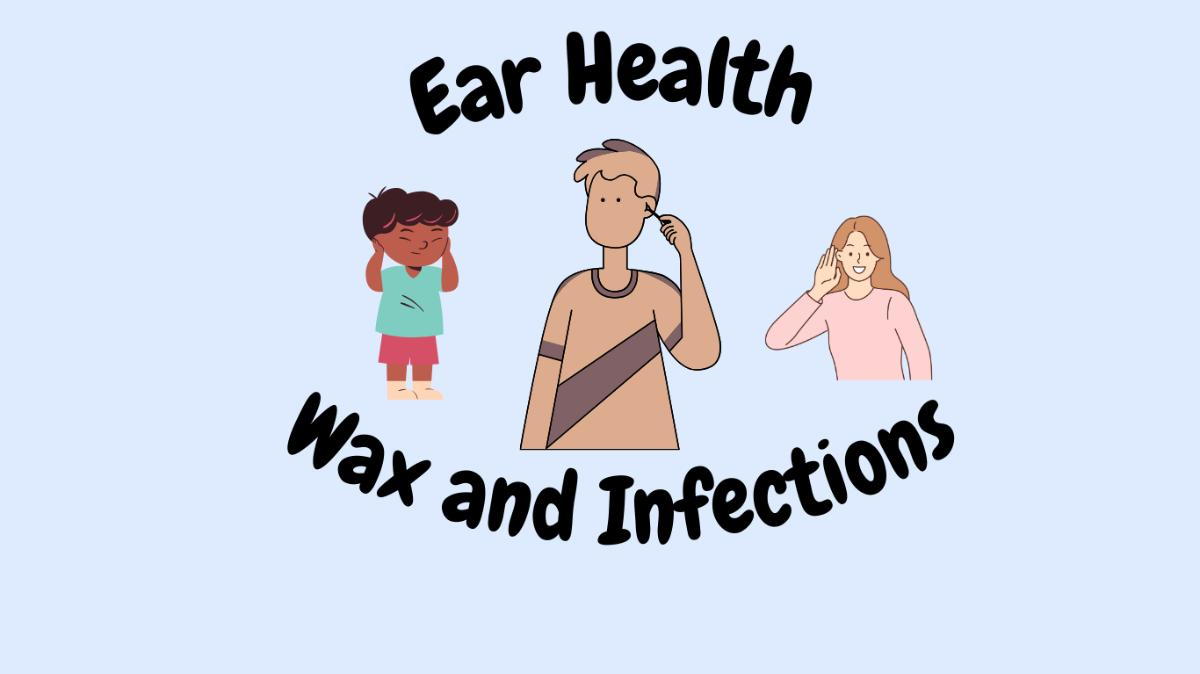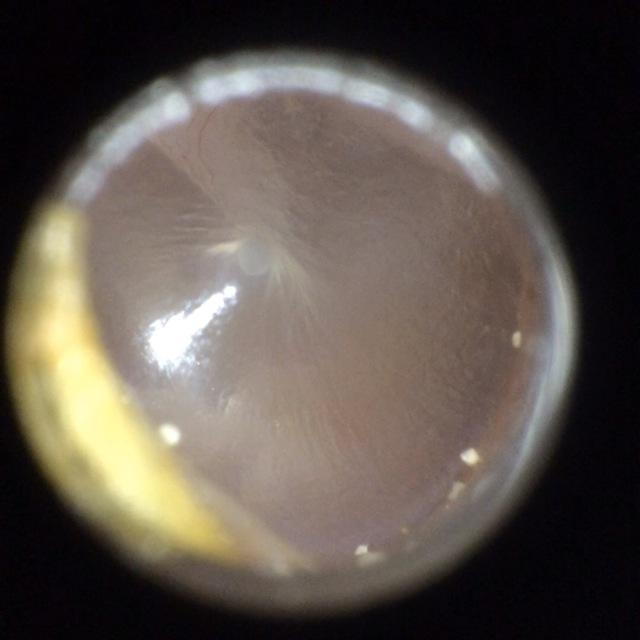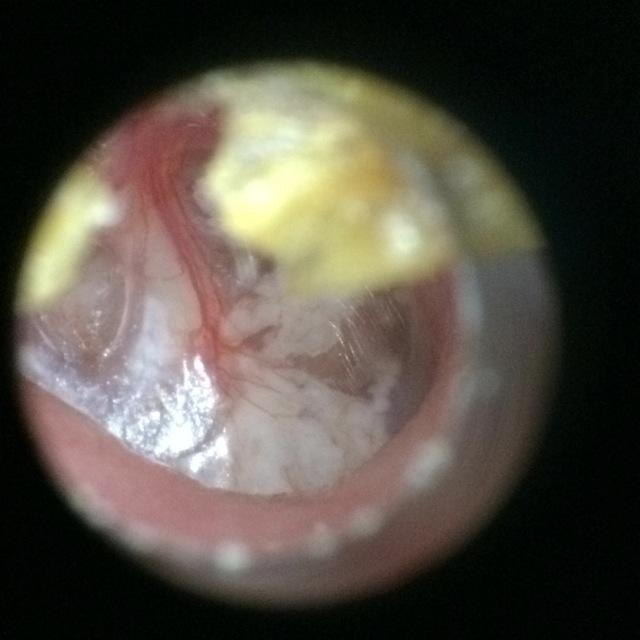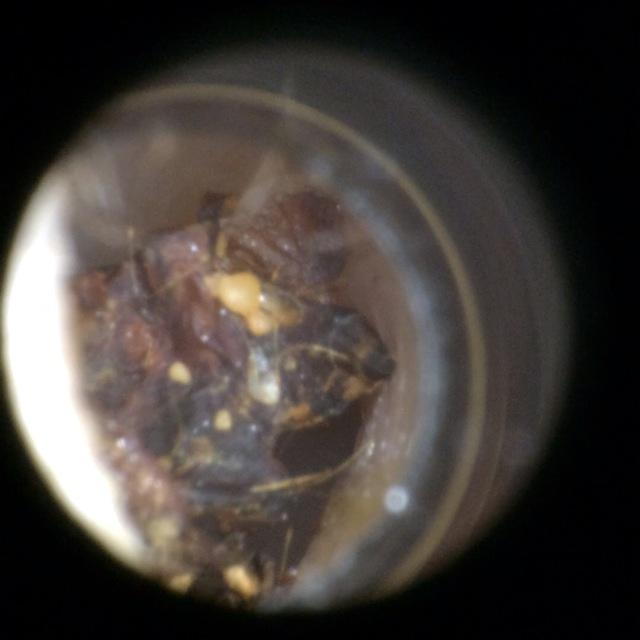Do You Hear What I Hear?

- posted: Dec. 18, 2023
We hear the holidays are approaching, so let's talk about our ears!
Your child may be asking you to gift them headphones or AirPods this holiday season, but they may not know how to use them safely. It seems that many of us prefer to listen to music or watch movies with the volume turned all the way up. However, constant exposure to loud volume may cause damage overtime. If your child complains of ear pain or tinnitus (ringing sounds) during or after headphone use it could be an indication that the volume was too loud. Here are some tips to help your child practice safe listening:
1) Remind them to listen at half-volume
2) Have your child take listening breaks in between long stretches of headphone use.
It’s also best to follow the rule that if you can hear what they are listening to with the headphones in place, then it's probably too loud for your child.
Now let’s get to talking about what is in our ears. Ear wax, otherwise known as cerumen is a naturally occurring substance that our body produces to prevent infection and protect the ear canal. There are tiny hairs that line the inside of our ear canals and "sweep" away excessive wax and debris. Cerumen is typically golden-brown or yellow in color and is either sticky/waxy or flaky/dry.
Buildup of cerumen may cause itchiness, reduced hearing, ears feeling plugged or uncomfortable. A fun fact about cerumen is that the amount of cerumen produced varies across each ethnicity. People often worry that they have too much wax in their ears and so removing ear wax at home has become a popular past time. However, we should:
- Avoid using Q-tips, fingers, or foreign objects: This increases the likelihood of pushing the wax further into the ear, if pushed back far enough there's a possibility of altered hearing, punctured ear drum, tinnitus, or dizziness.
- Avoid using ear candles: Ear candling is a trend that has gained popularity throughout the years as a method of cerumen removal. This method claims to use heat to create a vacuum which will help relieve sinus pressure and a buildup of cerumen, but it is dangerous, especially for children.
However, built up ear wax isn’t always the reason your child is experiencing discomfort. Rather, they may be experiencing symptoms of an ear infection. An ear infection occurs when the Eustachian tube, or the canal that connects the nasal cavity to the middle ear, becomes clogged with fluid. This typically occurs when you have a cold, a sinus infection, or allergies. Since the middle ear space connects with the sinuses and nose, it's hard to prevent ear infections in small children when they are nasally congested. In addition to complaints of ear pain, some signs that could indicate an ear infection are as follows:
- Tugging on or covering ears (most common in infants and toddlers)
- Increased fussiness
- Fever
- Headache or dizziness
- Swelling or redness around the ear
- Ear is tender to touch
- Trouble sleeping
- Discharge pouring out of ear
If you suspect your child has an ear infection or have any questions, give our office a call or send us a text with your child’s name and date of birth at 844-904-7384. It is important to minimize the possibility of rupturing the ear drum and preventing other infections from occurring.

This is what a normal, healthy eardrum looks like!

This is an example of what an ear infection looks like.

This dark, solid substance is actually ear wax mixed with a few grains of sand stuck in the ear canal.
Resources:
https://my.clevelandclinic.org/health/diseases/14428-ear-wax-buildup--blockage#symptoms-and-causes
https://www.cedars-sinai.org/health-library/diseases-and-conditions/i/impacted-earwax.html
https://www.healthychildren.org/English/health-issues/conditions/ear-nose-throat/Pages/Acoustic-Trauma-Hearing-Loss-in-Teenagers.aspx

- posted: Dec. 18, 2023
We hear the holidays are approaching, so let's talk about our ears!
Your child may be asking you to gift them headphones or AirPods this holiday season, but they may not know how to use them safely. It seems that many of us prefer to listen to music or watch movies with the volume turned all the way up. However, constant exposure to loud volume may cause damage overtime. If your child complains of ear pain or tinnitus (ringing sounds) during or after headphone use it could be an indication that the volume was too loud. Here are some tips to help your child practice safe listening:
1) Remind them to listen at half-volume
2) Have your child take listening breaks in between long stretches of headphone use.
It’s also best to follow the rule that if you can hear what they are listening to with the headphones in place, then it's probably too loud for your child.
Now let’s get to talking about what is in our ears. Ear wax, otherwise known as cerumen is a naturally occurring substance that our body produces to prevent infection and protect the ear canal. There are tiny hairs that line the inside of our ear canals and "sweep" away excessive wax and debris. Cerumen is typically golden-brown or yellow in color and is either sticky/waxy or flaky/dry.
Buildup of cerumen may cause itchiness, reduced hearing, ears feeling plugged or uncomfortable. A fun fact about cerumen is that the amount of cerumen produced varies across each ethnicity. People often worry that they have too much wax in their ears and so removing ear wax at home has become a popular past time. However, we should:
- Avoid using Q-tips, fingers, or foreign objects: This increases the likelihood of pushing the wax further into the ear, if pushed back far enough there's a possibility of altered hearing, punctured ear drum, tinnitus, or dizziness.
- Avoid using ear candles: Ear candling is a trend that has gained popularity throughout the years as a method of cerumen removal. This method claims to use heat to create a vacuum which will help relieve sinus pressure and a buildup of cerumen, but it is dangerous, especially for children.
However, built up ear wax isn’t always the reason your child is experiencing discomfort. Rather, they may be experiencing symptoms of an ear infection. An ear infection occurs when the Eustachian tube, or the canal that connects the nasal cavity to the middle ear, becomes clogged with fluid. This typically occurs when you have a cold, a sinus infection, or allergies. Since the middle ear space connects with the sinuses and nose, it's hard to prevent ear infections in small children when they are nasally congested. In addition to complaints of ear pain, some signs that could indicate an ear infection are as follows:
- Tugging on or covering ears (most common in infants and toddlers)
- Increased fussiness
- Fever
- Headache or dizziness
- Swelling or redness around the ear
- Ear is tender to touch
- Trouble sleeping
- Discharge pouring out of ear
If you suspect your child has an ear infection or have any questions, give our office a call or send us a text with your child’s name and date of birth at 844-904-7384. It is important to minimize the possibility of rupturing the ear drum and preventing other infections from occurring.

This is what a normal, healthy eardrum looks like!

This is an example of what an ear infection looks like.

This dark, solid substance is actually ear wax mixed with a few grains of sand stuck in the ear canal.
Resources:
https://my.clevelandclinic.org/health/diseases/14428-ear-wax-buildup--blockage#symptoms-and-causes
https://www.cedars-sinai.org/health-library/diseases-and-conditions/i/impacted-earwax.html
https://www.healthychildren.org/English/health-issues/conditions/ear-nose-throat/Pages/Acoustic-Trauma-Hearing-Loss-in-Teenagers.aspx
Monday
8:00 am - 12:00 pm
1:15 pm - 5:00 pm
Tuesday
8:00 am - 12:00 pm
1:15 pm - 5:00 pm
Wednesday
8:00 am - 12:00 pm
Thursday
8:00 am - 12:00 pm
1:15 pm - 5:00 pm
Friday
8:00 am - 12:00 pm
1:15 pm - 5:00 pm
Saturday
Closed
Sunday
Closed